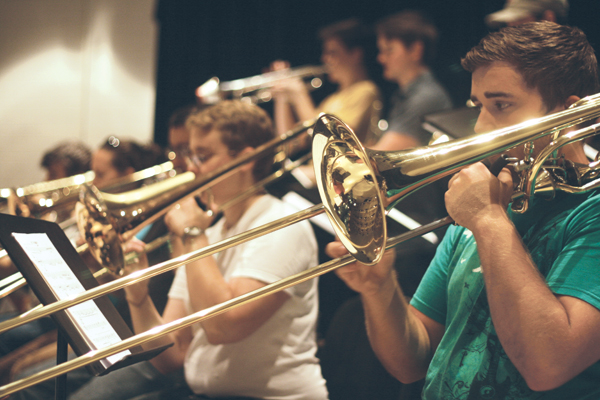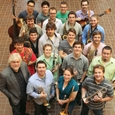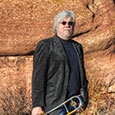
In discussing the state of jazz in the 21st Century, I have often referred to that famous line from Charles Dickens’ classic A Tale of Two Cities “It was the best of times, it was the worst of times….” The rest of the quote is ironically applicable to this article as well, but let’s just focus on the opening 12 words.
The Best of Times
There has never been a more glorious time in history as far as access to information. One needs only go to YouTube online and search for any type of music and any artist living or dead, and there they are. The student of jazz today can watch Clifford Brown performing Oh Lady Be Good from the Soupy Sales TV Show of the 1950s (Soupy’s On), or John Coltrane playing Impressions on Ralph Gleason’s Jazz Casual. The Coltrane video is crystal clear. You can see the fingerings Trane used, the piano voicings of McCoy Tyner, sticking technique from Elvin Jones, and a masterful solo by Reggie Workman.
Then you can jump to the present and find out about the latest-and-greatest of the new generation (I recommend Marshall Gilkes with the WDR Big Band playing his composition Downtime. Which begs the question, Why aren’t there more groups like the WDR in the U.S.?). We, the denizens of the internet age, have no excuse for being uninformed or uninspired. There is no reason why all students of jazz should not be as well-versed in the language as the most knowledge-drenched scholar in the hippest halls of ivy. What a grand time to be alive!
I believe that it is also the best of times due to the ever-expanding scope and high quality of jazz pedagogy. Virtually every program of higher learning now has at least some component of jazz in its curriculum. Many institutions are now made up of some of the most talented and successful practitioners of this music on the planet. The result is that there are more well-taught and super-talented young jazz musicians in the world today than in any other era, including all the years that jazz was the popular music of the land.
There is still another reason for cheering for the marvelous time in which we live. Recording technology along with notation software has become both affordable and easy to use. Anyone can now make a professional-level recording in the garage, basement, man-cave, or shed of choice.
All of the above makes for a glorious gumbo of fertile activity for jazz, the likes of which has never been seen before. So what’s the problem?
The Worst of Times
The music industry itself is in a stupor as it tries to figure out just how to deliver a product and actually make money. The same technology that makes all of this great music one mouse click away also keeps the industry from raking in the profits of the past. Forget about sending any of that money down the chain to the artists themselves.
There is a poignant meme on Facebook that makes the following frightening point: today’s consumer is more than happy to pay $5.00 for a large cup of coffee, but will not spend $.99 on a piece of music if you bring them kicking and screaming to iTunes and click the mouse for them. Consumers are so conditioned to getting music free of charge, be it a club owner taking advantage of a student jazz group or the average consumer on the internet listening to a live stream, that they simply won’t buy digital. This bodes ill for any type of hard copy such as the CD (and alas, vinyl is not really making the comeback we all hoped for).
Record labels are calling it quits left and right. The majors have no clue what to do, and the independents are going into digital lockdown and accepting no new artists. Gone are the days when labels would fund projects, and the era is fast drawing to a close when arts organizations support individuals. The music business is quickly becoming an artificial self-creating entity where vote-in television shows replace individual taste while masses of uneducated consumers with incredibly short attention spans await the next market-approved artist. At the very low end of this schematic, in the land of a-fraction-of-a-fraction, art exists. Sidelined by the entire industry and defunded, jazz has become the quark of the great tree of commerce that is the ever-changing music industry.
In writing this, I am tempted to lose all hope for our music’s future. I have concluded however, I have concluded that there is not only hope, but a wonderful opportunity to turn all of this around and to spread the joy of art to one and all. The key is passionate jazz advocacy.
Jazz Advocacy
After almost every single concert by the One O’Clock Lab Band, I am approached by someone who says: “Wow! I really loved the show. I have never heard jazz before and had no idea that I even liked jazz. I am now such a huge fan.” What does this mean? I believe that there is a large portion of our society that is starving for great art and does not even know it. As cool as modern technology is, there is simply no substitute for live music. When people hear a well-prepared, high-level concert where the audience is respected and involved, they are blown away. Isn’t that how we all started? For me, it was seeing the jazz band from the University of Southern Mississippi directed by Raoul Jerome live for the first time. It was like a lightning bolt went right through me. It wasn’t just jazz; I felt it the first time I heard Edgar Winter live, the first time I heard a symphony orchestra live, and the first time I heard a professional concert band live. In today’s television and smartphone, tablet, laptop, large-screen HD environment, the consumer only gets one flavor. Garbage in, garbage out. How can we blame people for not wanting our music? They have never heard it.
The first step is to get the music to the people where they live. Live performance is best, but the next best place is the aforementioned YouTube itself. A great example of just how powerful this venue can be is via my pal Bret Primack, the Jazz Video Guy. Bret’s YouTube advocacy is state of the art. Take a minute to search for Jazz Video Guy. His videos are powerful. You are now equipped with hours of jazz advocacy video for your classes, lunch hour in your band room, pre-show milling-about time. There are so many places where footage such as Bret’s will make a difference. It only takes one time to light the fire for someone who may go on to become a voice in our art. We, as educators, can make that happen. Film your best concerts; but make sure your guest artist will agree to take part. Stream it live on the internet as well. The key to all of this is making sure that your audio feed is good. Using modern technology, that is easily doable.
Also, if you haven’t already joined, become a member of JEN (The Jazz Education Network). This fast-growing group of like-minded heroes represents the best thinkers and doers in the jazz world today. It always helps to surround yourself with positive people who are all making a difference.
You can also finance your own smartphone app. With the One O’Clock app, I use the online template provided by mobileroadie.com. You can charge for the app, or make it a free download (as we do). As of this writing, we have over 6,000 users who have downloaded this wonderful portal featuring our music, videos, photos, and calendar.
It’s this kind of advocacy that will reach the new market for jazz: online, on their smartphones, and live at their schools. It is simply a matter of doing what we all do best: making great music, and then
taking it one step further. The old mechanisms for communication are gone; it only gets done if we do it. In this regard, I subscribe to the great modern philosopher Yoda who says: “Do or do not. There is no try.” So, get out there and do it.
If you are worried about all these great young artists that we are turning out who don’t fit the contemporary mold of being employable (i.e. “There are no gigs out there.”), I suggest that you read a copy of David Liebman’s treatise Jazz Education in The Century of Change: Beyond the Music. This wonderful piece is right up there with Daniel Pink’s work on the Conceptual Age and should be required reading for everyone who wants to make a difference. I have made both examples available on the One O’Clock website at www.theoneoclock.com. Click on the Instrumentalist icon.
The Future
In the final analysis, I believe society is ripe for a new renaissance. What was old will be new, and those who were lost will be found. It is up to all of us in the jazz community to get the word out about this most creative and vital of art forms. Bring the music to where the young people live and light the fire. It is not enough to gripe about it or grumble, “things aren’t like they used to be”. Of course they aren’t. As long as we change along with the wave that is sweeping the world while keeping our message pure, everyone will benefit. As Dexter Gordon always said, “keep swingin’.”






